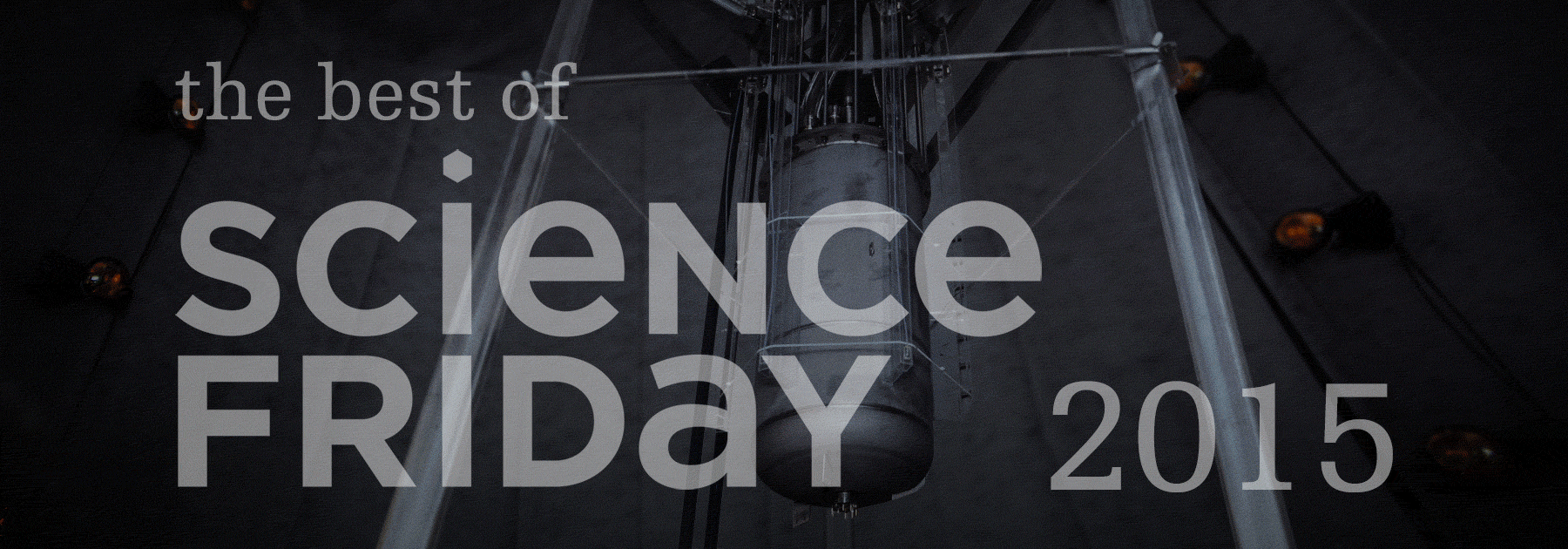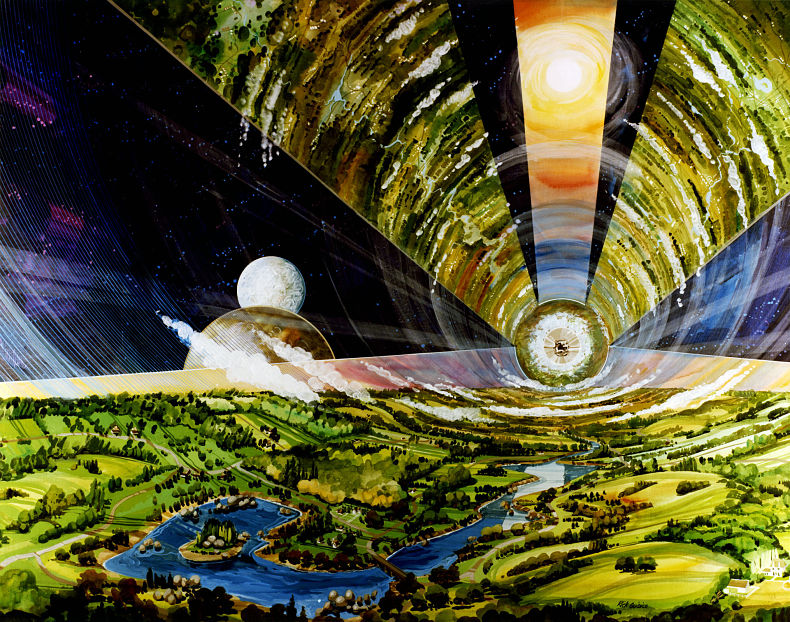The Best of Science Friday, 2015
SciFri staffers pick their favorite stories and activities from the year.

It’s the end of the year, and it’s been a great one here at Science Friday! We redesigned our website, we released a short film, we celebrated cephalopods, and so much more.
We asked the SciFri staff what story or activity they were most proud of this year.
A Tribute to Oliver Sacks
Annie Minoff, SciArts Producer
Oliver Sacks was a friend of SciFri and frequent guest on our show (even participating in our annual Cephalopod Week!). But I’ll admit I had no idea of his range of interests—or the profound way in which he touched so many lives—until I heard our tribute to him the week he passed away. The story that sticks with me came from caller Harvey in Fresno, a neurologist who shared a story he’d heard at UCLA about how Oliver had saved a herniating patient by carrying her—upside down—into surgery. Listen to the segment, and then vote on which Oliver Sacks book the SciFri Book Club should read next!
Live, From Saint Paul
Ira Flatow, Host and Executive Producer
I loved our show from Minnesota, which was on the science of superheroes and their superpowers. Using the arts as gateway to science is a fun way to explore both!
Spider Stories That Will Stick to You
Luke Groskin, Video Producer
Why do I love the piece? Because, spiders! Seriously, if you’re still afraid of these amazing creatures, stop what you’re doing. Listen to the segment, go find a spider, and be marveled.
Monster Microbiome Mash
Christopher Intagliata, Senior Producer
This feature, part of our Halloween special, was definitely one of those “check your radio dial” moments: Ira interviewing a couple microbiologists, but then you hear: “typical zombies, they have that green coloring to them because of the compounds being produced by the microbial breakdown of our bodies.” Wait, what?! Loved this mashup of real science and horror movies—props to our producer Becky for this one!

Build a Cloud Chamber
Danielle Dana, Executive Director
This year I spent a lot of time playing with our educational lessons, which I always find really accessible. One of my favorites was the lesson on building a cloud chamber. You can’t deny how cool it is once you start, and as a staff we collectively watched the clouds for hours. I am also going to cheat and name a second favorite thing—our 2015 end-of-year fundraising video. I’m a sucker for puppies!
4850 Feet Below: The Hunt for Dark Matter
Brandon Echter, Engagement Manager
Our video producer Luke makes amazing videos all year long, like the one about an adorable octopus—which won over the Internet—or the one that looked at the hard science behind hard cider. But my favorite this year was his documentary short about the hunt for dark matter. Way to make incredibly complex science accessible, Luke!
New Horizons Prepares for Pluto Close-Up
Alexa Lim, Associate Producer
The New Horizons mission is more proof that space is awesome. I was amazed to see the photos of Pluto develop from a pixelated brown dot into detailed images of the “whale tale,” where you could make out the edges of the ice mountains. You could really feel the excitement of the scientists who have been waiting nearly a decade for these photos. I’m looking forward to seeing the pictures that will be unveiled in 2016.
This ’70s Artist Painted Our Future in Space
Julie Leibach, Managing Editor, Online
I’m keen on this story about an artist named Rick Guidice who, back in the 1970s, teamed up with NASA to illustrate space colonies of the future. His kaleidoscopic paintings are intriguing compositionally and conceptually, and our new and improved website showcases them magnificently. We may not have any space colonies yet, but one look at Guidice’s art, and the lifestyle doesn’t look half-bad!

A Science Hero, Lost and Found
Ariel Zych, Education Manager
I can’t count the number of natural objects bearing Alexander von Humboldt’s name that I’ve encountered and adored (Humboldt squid!), and yet this segment was the first introduction I had to von Humboldt the scientist. The enthusiasm and attention to detail of biographer Andrea Wulf soaked this segment in field notebooks, mountains, plants, and animals and made the pursuit of natural history seem glorious.
The 1-2-3s of Hard-Cooked Eggs
Christian Skotte, Director of Program Strategy
Confession time: I have an insatiable appetite for incredible, edible eggs. My doctor tells me to skip ’em, but I don’t listen. (Or I quote research on high cholesterol levels being hereditary…) I’m also passionate about learning how to get the most deliciousness from these delectable little packages. So this look at the best way to boil eggs was an eggs-ellent addition to my year.
Is Sneaker Innovation Changing How We Move?
Chau Tu, Web Producer
I love diving deep into the science of everyday things, and that’s exactly why I enjoyed this segment on sneaker science so much. Learning about the ongoing evolution of sneakers and its materials is absolutely fascinating; they aren’t always just fashion statements. And who knew that one reason Air Jordan 22 designer D’Wayne Edwards included titanium in the shoe was because of the element’s atomic number?
Sherry Turkle: Reclaiming Conversation
Sarah Goldfarb, Development Assistant
My favorite segment of 2015 would have to be Ira’s interview with Sherry Turkle, in which she discusses her new book, Reclaiming Conversation. Her points really spoke to my frustration with the prevalence of technology in social interactions, but also forced me to reexamine my own use of smart phones and technology. I especially like her idea about the “rule of three” when using smart phones in a social setting: waiting for three people in a large group to look up and interact before using your phone again. I feel like this is a realistic goal for large social gatherings today.
The Art of Scent in Los Angeles
Becky Fogel, Production Assistant
At Science Friday, we’re normally on the phone or typing away at our desks, communicating with scientists at a distance. It’s a rare treat to get into the field and get your hands dirty, so to speak. That’s why I love this article about the Institute for Art and Olfaction (IAO), by web producer Chau Tu, so much. She traveled to IAO in Los Angeles’ Koreatown to not only learn about the science behind perfume but to make a scent of her own. I also enjoyed getting a sense of what drew people to creating their own fragrances. It’s fun to read about so many people who are basically doing chemistry without even necessarily thinking that perfume-making is a kind of science. (Though, of course, many did.) As the founder of IAO states in the piece, “Inherently, perfumery is experimentation.” I felt like I could smell the rose notes, jasmine, and sun-soaked city streets of LA while reading this article. It was an experience for the senses!
What was your favorite? Let us know in the comments!
Brandon Echter was Science Friday’s digital managing editor. He loves space, sloths, and cephalopods, and his aesthetic is “cultivated schlub.”